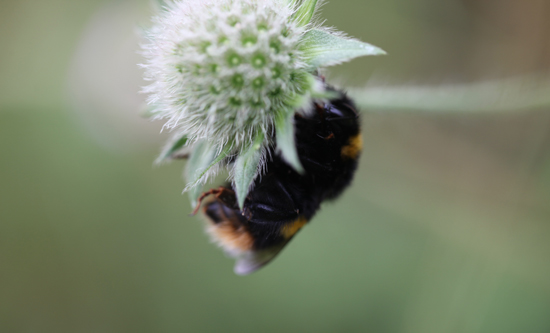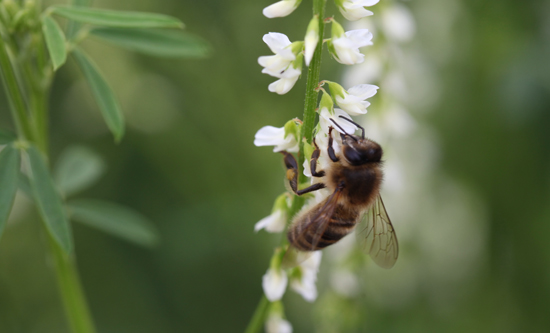In 2013, we looked for the plants in the Living Field garden that were most attractive to bumble bees and hive bees, from the first flowers in late March, to the time of the first heavy frost in October. Most visitors were bumble bees of the commoner species, but occasionally hive bees foraged around.

We did not grow plants for the particular purpose of feeding bees, yet three areas were particularly active. One was the 10 year old meadow, where field scabious was the favourite; another was the legume collection set up in the west garden; and the third was a piece of rough ground in transition from a sown, annual cornfield to a more perennial community and containing tufted vetch and viper’s bugloss.

By mid summer, many of the bumble bees looked battered and ragged, hardly enough wing left to fly, the result of repeatedly navigating the tangle of vegetation. It’s in a bee’s nature to work itself to death for the hive, eventually falling to the ground or hanging under a flower head. We did not look for nests of the bumble bees to see how many were inside the garden; not did we observe the directions from which the bees entered and left, but that could be something to do in 2014.

Photographs and notes on these and other plants and bees can be viewed at The Garden / Bee plants. All species, including first-year plants of the two melilots, should be around in 2014. (The melilots died after flowering in 2013.) Several plants in the medicinals bed should flower well this year, labiates such as betony, and borages and foxgloves.
[Update 10 September 2014]
